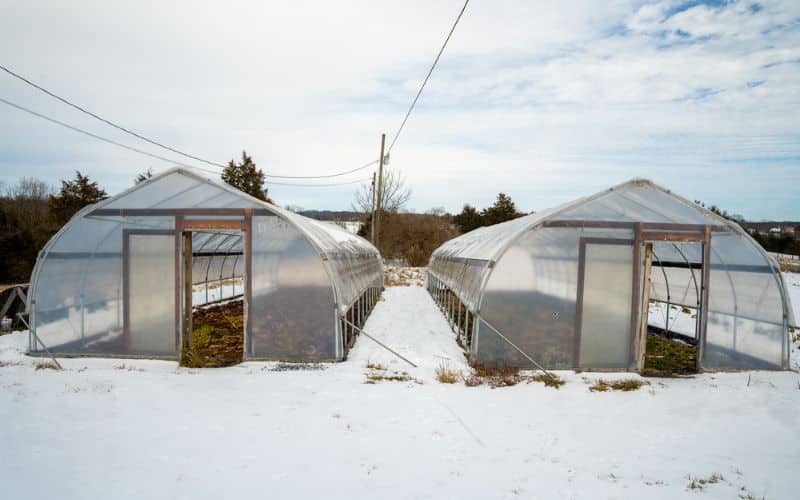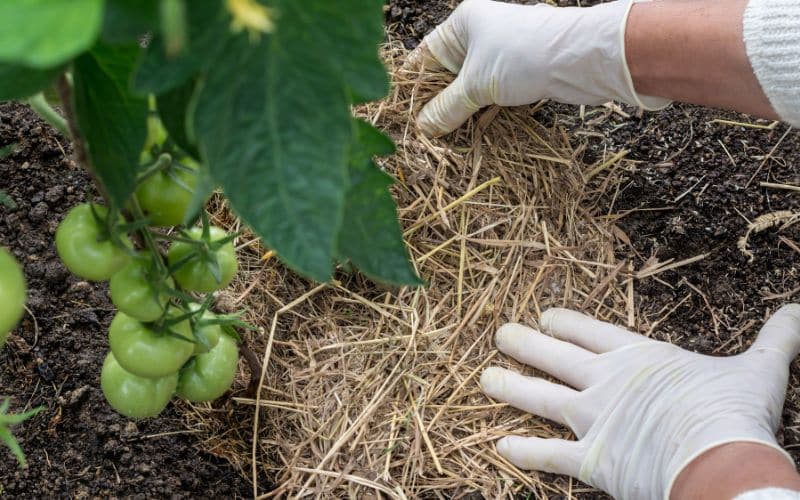
As winter approaches, safeguarding your vegetable garden becomes a priority. The dropping temperatures can be harsh on your tender plants, but with the right strategies, you can shield your greens and ensure their survival. In this article, you’ll discover how to create a snug haven for your vegetables, from using innovative microclimates to choosing cold-tolerant crops.
You’ll learn the importance of cover crops such as winter rye and the benefits of cold frames that let in sunlight while protecting plants from frost. Whether you’re looking to extend your harvest or prepare your soil for spring, these tips will equip you with the knowledge to keep your garden thriving in the cold months ahead.
Why Is It Important to Protect Your Vegetable Garden in Winter?
Preventing Frost Damage
Frost and cold snaps are among the most significant threats to your vegetable garden during the winter months. When temperatures plummet, the water inside plant cells can freeze, causing cell wall damage. This results in the plant’s tissues becoming blackened and softened, often leading to outright plant death. By protecting hardy vegetables like spinach under a blanket of snow, you’re minimising growth cessation. Similarly, for root vegetables and resilient greens such as kale and broccoli, employing a floating row cover can extend their life into temperatures as low as the low 20s F.
Low tunnels installed over lettuce avoid direct contact with frigid air while a frost blanket proves to be a horticultural innovation, allowing sunlight to reach the plants and fend off temperatures well beyond a 5°F drop. It’s crucial to keep the soil around these plants adequately mulched since moist soil retains more heat, shields the roots from freeze damage, and provides an additional layer against the invasive chill.
Preserving Soil Nutrients
The vitality of your garden’s soil in the winter is a cornerstone for robust growth in spring. Exposed soil is vulnerable to nutrient loss due to wind, rain, and snow. Organic gardener Resh Gala recommends covering your soil to prevent this. The application of compost and soil amendments like bone meal and kelp enhances the nutrient content, which is vital for next season’s planting. These amendments begin to break down over the winter, enriching the soil and becoming biologically active.
Moreover, implementing cover crops such as oats or alfalfa contributes to soil protection against erosion while also increasing soil fertility by boosting nitrogen levels. It’s best to avoid extensive tilling as this disrupts the soil’s microbial ecosystem, particularly the fungal hyphae which help in decomposing organic material and maintaining soil structure. Instead, to safeguard the active root zone from nutrient leaching, mulch your soil or plant a cover crop post spreading the amendments. This investment not only protects the current state of your garden but also preps it for the busy seasons ahead.

Understanding the Different Methods of Protecting Your Vegetable Garden
Your vegetable garden needs protection from the harsh winter elements to continue yielding fresh produce, or at least to ensure it wakes up healthy in the spring. Here’s how you can shield your green assets effectively.
Mulching
Mulch acts as an insulating barrier for your garden. Its application is critical to maintain consistent soil temperatures during winter’s freezing conditions. This protective layer performs several roles:
- Reduces water loss: The moisture retaining quality of mulch means you won’t have to water as often, saving you time and resources.
- Prevents soil erosion: By covering the topsoil, mulch guards against wind and rain which could otherwise wash away your nutrient-rich earth.
- Suppresses weed growth: Winter weeds have no chance against a thick layer of mulch that suffocates unwanted sprouts.
- Eases temperature transitions: A good mulch layer protects from the destructive freeze-thaw cycles that result in soil heaving, which can damage plant roots severely.
Application of 2 to 4 inches of organic materials like bark mulch, hay, or shredded leaves will shield your tender root vegetables from extreme cold and extend your harvesting season. Moreover, as mulch decomposes, it enriches your soil with beneficial organic matter.
Using Row Covers
Row covers provide a quick and adjustable means to protect your plants. Opting for floating row covers can offer several advantages:
- Temperature regulation: They create a microclimate that buffers your vegetables against sharp drops in temperature.
- Frost protection: Delicate foliage and blooming flowers are safeguarded against frost burn.
- Pest deterrent: These covers serve as a physical barrier against many insects and animals that might see your garden as a buffet.
In colder regions, combining row covers with additional insulation like straw enhances their effectiveness. The slight temperature modification provided by these fabrics can be the difference between a thriving winter veggie patch and a wilted one.
Building a Hoop House or Cold Frame
Expanding on the concept of row covers, hoop houses and cold frames provide a more robust and semi-permanent solution. Here’s why they’re beneficial:
- Extended growing season: They offer significant warmth and protection, often allowing garden enthusiasts to cultivate vegetables year-round.
- Controlled environment: These structures let you manage temperature and humidity levels, thus facilitating more sensitive or warm-weather crops’ survival through winter.
- Versatility: You can make them from various materials to suit your budget and adjust their size as per your garden’s needs.
Constructing a hoop house involves bending metal or PVC pipes into arches over your garden beds, then draping greenhouse plastic over them. On the other hand, a cold frame is usually a simple, bottomless box with a clear lid that sits directly on the garden bed, trapping warmth from the sun.
By implementing these methods, your garden gains a potent shield against the cold. Remember, the best protection strategy will factor in the specific conditions of your region and the particular needs of your plants.
Best Practices for Winter Vegetable Garden Protection
Protecting your vegetable garden during winter ensures that your hard work doesn’t go to waste. With the right strategies, your garden can flourish even in the colder months. Let’s delve into practical steps to safeguard your winter crops.
Cleaning up the Garden
An immaculate garden bed is vital for winter protection. Starting with a clean slate prevents diseases and discourages unwanted pests from overwintering in your space. As experienced by Indiana gardener Cassie Dunmyer, clearing out plants and weeds before the temperature dips is crucial. After harvesting, remove plant debris and do a final weeding to ensure the soil is clear of potential problems. Avoid leaving behind any slimy or moldy plant matter; these can harbour diseases that may affect your plants next season. If healthy, you might choose to let the plants decompose naturally on the soil, which can enrich it with nutrients. However, remember to remove any infected material immediately to maintain a thriving garden environment.
Wrapping or Insulating Plants
The insulation of plants can be the difference between a surviving and thriving winter crop. Materials like burlap provide excellent protection for plants in areas prone to harsh winds and heavy snow. Wrapping your plants allows them to retain their shape while still enabling airflow and moisture penetration. It’s important to secure the insulation material properly — twine works effectively to keep the wrapping in place. For delicate perennials and bulbs, you may also consider specialized plant wraps that protect against the premature thawing of young trees which can lead to bark injury in varying temperatures.
Using Heat Sources
While nature does its best to protect vegetation, sometimes additional heat sources are necessary to keep your garden going through winter. If you’re utilising low tunnels or hoop houses, they can act as natural heat preservers, trapping warmth from the sun during the day. The effectiveness of these structures is enhanced when they are filled with crops, as fuller spaces retain more heat. Moreover, tweaking these heat sources, such as uncovering during warmer days or introducing a second layer of protection during extreme cold, can maintain an ideal temperature for vegetable growth. It’s all about finding the balance and adapting to the changing climate while ensuring your garden remains a productive sanctuary throughout the winter.

Conclusion
Arming yourself with these strategies ensures your vegetable garden thrives even in the chill of winter. Remember, a bit of preparation goes a long way in shielding your greens from the cold. By adopting these protective measures, you’ll enjoy the fruits of your labour when spring blossoms. So don’t let the winter woes keep you from gardening; with these tips, you’re all set to grow a lush, productive garden all year round. Happy gardening!








